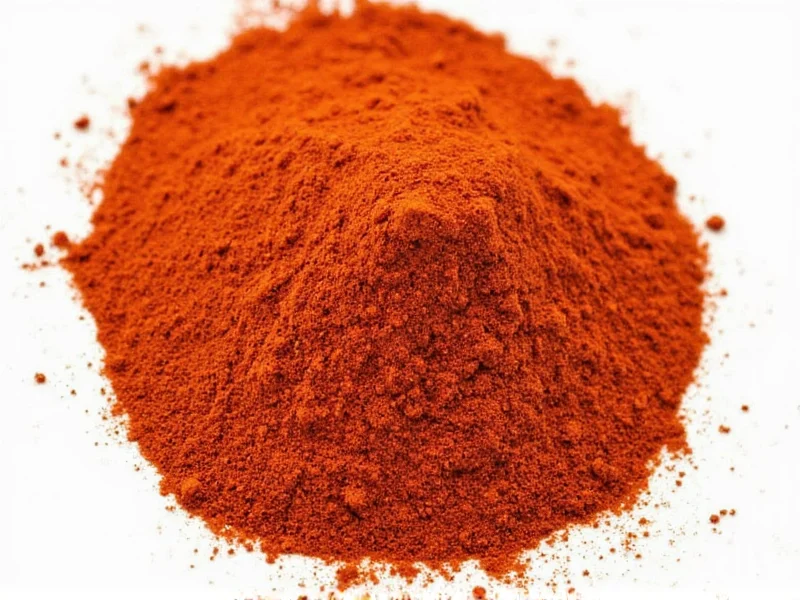When you're in the middle of cooking and realize you're out of chili powder, the question can I substitute cayenne pepper for chili powder becomes urgent. Understanding the relationship between these two spices prevents recipe disasters while ensuring your dish maintains its intended flavor profile.
Understanding the Fundamental Differences
Cayenne pepper and chili powder are not interchangeable without adjustments. Cayenne pepper consists of ground dried cayenne peppers, delivering pure, intense heat at 30,000-50,000 Scoville Heat Units (SHU). In contrast, chili powder is a spice blend typically containing ground chilies plus complementary ingredients like cumin, garlic powder, oregano, and paprika, with a milder heat level around 1,000-2,500 SHU.
The critical distinction lies in complexity versus intensity. Chili powder offers a balanced flavor profile essential for authentic Southwestern and Mexican dishes, while cayenne provides straightforward heat without the supporting flavors. Substituting one for the other without adjustment creates significant flavor imbalances that can ruin your recipe.
Practical Substitution Guidelines
When substituting cayenne for chili powder, precise measurements prevent your dish from becoming inedibly hot. The recommended ratio maintains heat balance while acknowledging the flavor gap:
| Chili Powder Required | Cayenne Pepper Substitute | Additional Flavor Boosters |
|---|---|---|
| 1 tablespoon | 1/4-1/2 teaspoon | 1/2 tsp cumin + 1/4 tsp garlic powder |
| 2 tablespoons | 1/2-1 teaspoon | 1 tsp cumin + 1/2 tsp garlic powder |
| 1/4 cup | 1-2 teaspoons | 2 tsp cumin + 1 tsp garlic powder + 1/2 tsp oregano |
Always add cayenne gradually, tasting as you go. Unlike chili powder, you cannot reduce heat once cayenne has been incorporated. For best results, combine the cayenne with complementary spices to approximate chili powder's complexity when substituting cayenne for chili powder in recipes.
When Substitution Works Best
Consider these factors before making the cayenne pepper vs chili powder substitution:
- Recipe Type: Works better in soups, stews, and sauces where other flavors can balance the intense heat
- Heat Tolerance: Adjust ratios downward for sensitive palates when determining how much cayenne equals chili powder
- Regional Cuisine: Avoid substitution in authentic Mexican dishes where chili powder's specific blend is essential
- Dish Stage: Add cayenne later in cooking to preserve its volatile heat compounds
For dishes where chili powder's earthy, smoky notes are crucial—like enchilada sauce or chili con carne—the substitution creates noticeable flavor gaps. In these cases, consider alternative substitutes that better match chili powder's complexity.
Better Alternatives When Possible
If you're exploring chili powder substitute without cayenne options, try these combinations:
- Paprika-based blend: 2 parts paprika + 1 part cumin + 1/2 part garlic powder
- Chipotle powder mix: 1 part chipotle powder + 1 part cumin + 1/2 part oregano (adds smokiness)
- Hot paprika solution: 3 parts hot paprika + 1 part cumin + 1/2 part onion powder
These alternatives better replicate chili powder's flavor complexity while providing adjustable heat levels. When adjusting recipes when substituting cayenne, remember that each alternative brings its own flavor characteristics that may require additional recipe tweaks.
Professional Chef Recommendations
Experienced chefs recommend keeping these principles in mind for successful spice substitution:
"Always consider the dish's final flavor profile. If you need heat without changing flavor balance, cayenne works with careful measurement. If you need the characteristic Southwestern flavor, create a custom blend instead of relying on single-spice substitutions." — Chef Maria Rodriguez, Culinary Instructor
Understanding heat level comparison of cayenne and chili powder helps prevent common kitchen mistakes. Remember that cayenne's heat intensifies over time, while chili powder's flavor melds with other ingredients. This difference affects how each spice behaves during cooking and in the final dish.











 浙公网安备
33010002000092号
浙公网安备
33010002000092号 浙B2-20120091-4
浙B2-20120091-4